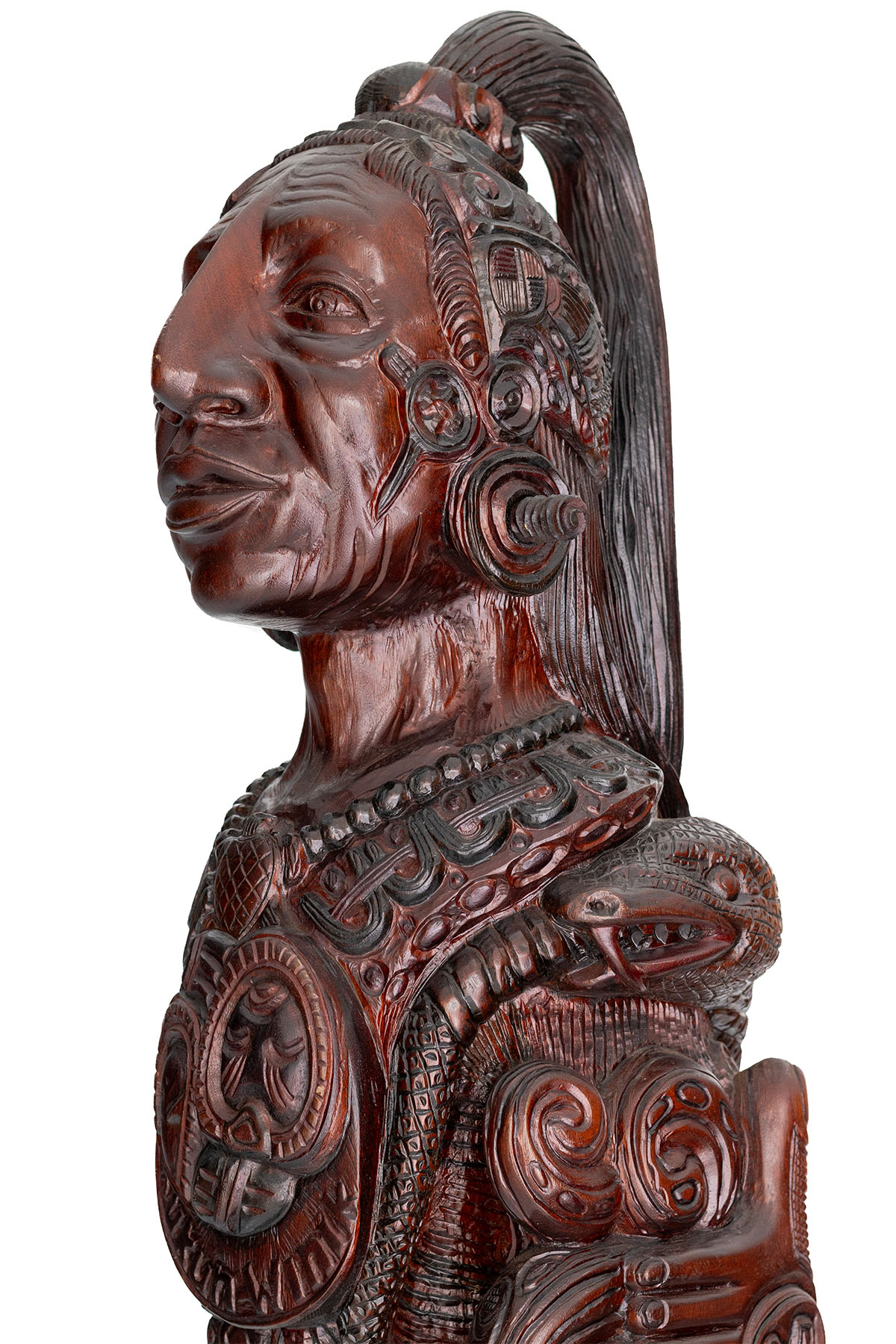Description
“From Cradle to Kings” is a compelling mahogany sculpture that vividly encapsulates the journey of American civilization, tracing the lineage from the ancient Olmec civilization to the grand heights of the Maya civilization. This intricate totem piece not only serves as an artistic representation but also a historical narrative, seamlessly blending cultural heritage and artistic expression.
At the base of the sculpture stands a figure representative of the Olmecs, the original peoples of the Americas. The bold, negroid features of the Olmec figure, with its thick lips and broad nose, reflect the distinct artistic style of the civilization that flourished from about 1500 BC to 400 BC. This foundation symbolizes the roots of Mesoamerican culture and acknowledges the speculated, albeit controversial, connections to the Mali Empire. The Olmecs’ legacy of stone carving in hard materials such as jade and basalt is echoed in the robust and enduring nature of the sculpture’s base.
Rising from this foundation, the totem transitions into the representations of the Classic Mayan civilization, which thrived from 250 AD to 900 AD. The Mayan influence is evident in the intricate carvings and hieroglyphs adorning the sculpture, reflecting their advancements in architecture, astronomy, mathematics, and writing. The shared artistic traditions between the Olmecs and the Mayans, particularly in stone carving, are visually represented through stylistic similarities that flow seamlessly from the base to the higher tiers of the totem.
A prominent feature of the sculpture is the snake, an emblematic symbol in Mayan culture. The snake’s tail in its mouth signifies the Mayan belief in the cyclical nature of life—creation, struggle, love, death, and renewal. This motif underscores the philosophical depth and spiritual beliefs that permeated Mayan society.
The glyphs and symbols engraved on the sculpture, such as ‘tubahi’ (meaning ‘On His Head’), reference specific Mayan practices like the tradition of cranial deformation to flatten the forehead, deemed attractive in their culture, and is featured prominently on the piece.
The sculpture also features a portrayal of Lady Pakal, wife of the famous Mayan King Pakal, adorned in a decorative skirt known as a ‘Piwil’. Her presence alongside King Pakal, who is depicted with a prominent ear piece called a ‘Tuup’, further enriches the narrative of Mayan royalty and heritage. The glyphs ‘yu-ne’ (his father’s child), ‘su-kun winik’ (Elder Brother), and ‘ya-al’ (Child of Man) intricately carved into the piece add layers of familial and societal significance.
Another significant figure in the totem is Lord Smoking Shell, a fierce warrior and young Mayan King from Lamanai in Northern Belize. His scepter and headdress are meticulously detailed, reflecting his authority and valor.
“From Cradle to Kings” stands as a multifaceted artwork that invites viewers to explore the rich tapestry of Mesoamerican history and culture. It is a visual and historical journey, offering a profound connection to the past and an appreciation for the artistic and intellectual achievements of these ancient civilizations.






















